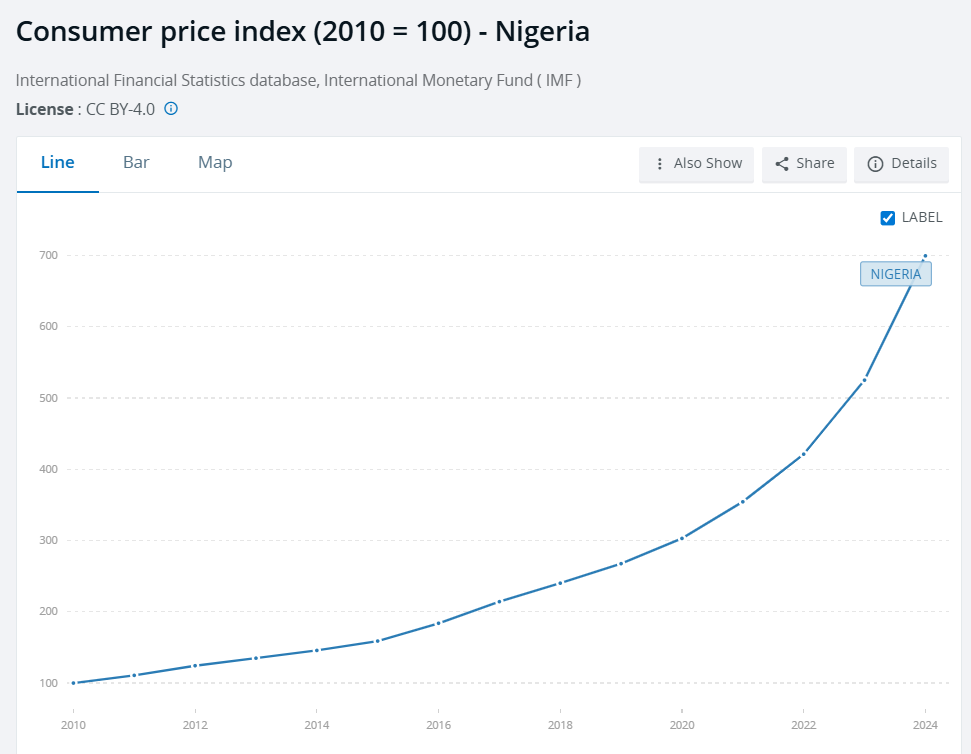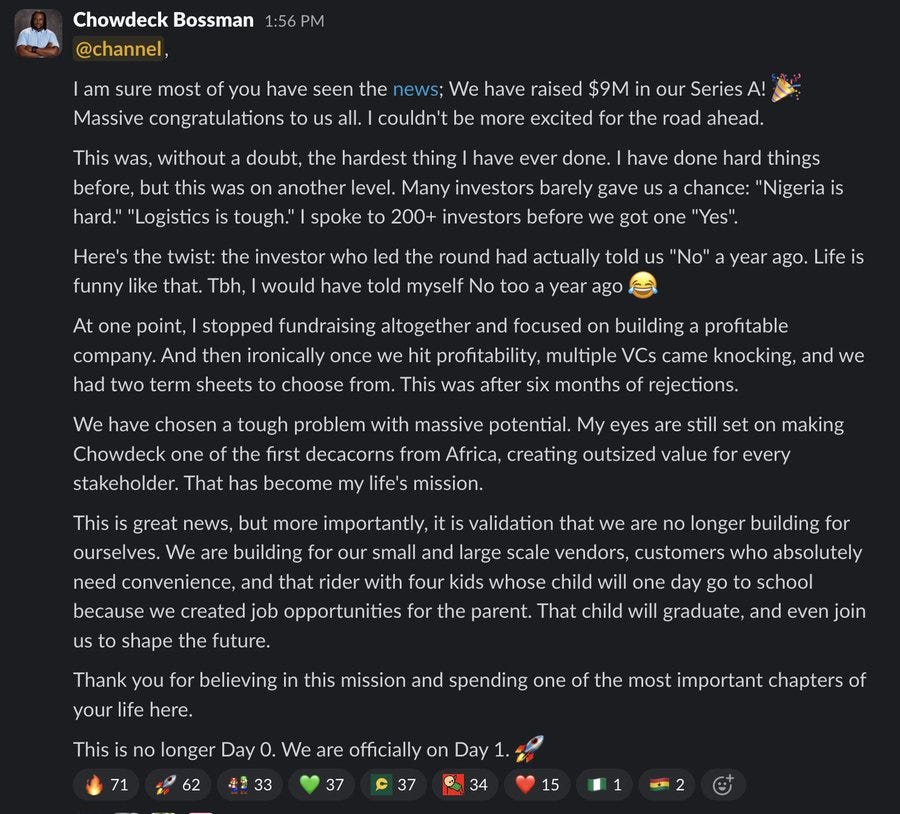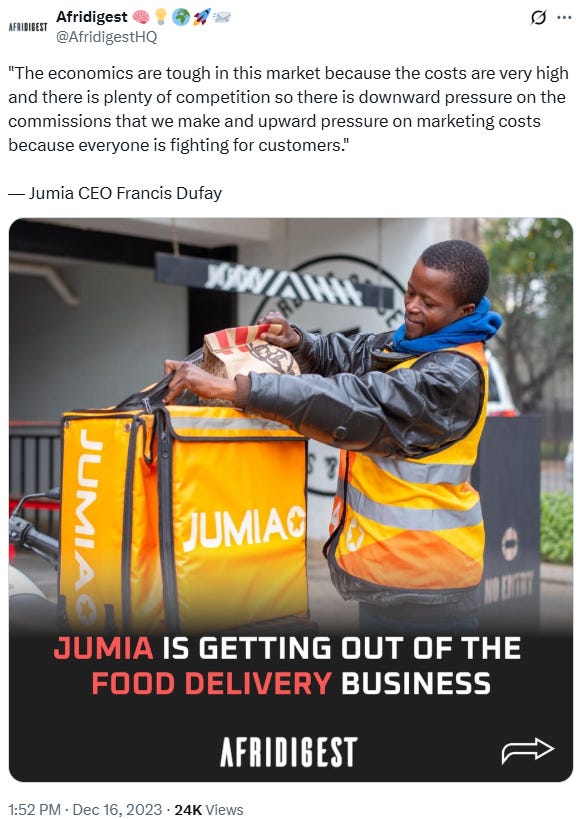How Chowdeck Succeeded Where Jumia Food Failed
An analysis of Nigerian food delivery platform Chowdeck's success, contrasting its strategy with the failure of Jumia Food, highlighting factors like unit economics, local adaptation, and infrastructure.
The Market Context 🔗
Paradoxical Growth
Despite eroding consumer purchasing power, Nigeria's food delivery market grew at a nearly 200% CAGR from 2021-2024, creating a massive opportunity.

Source: Paystack
Chowdeck's Milestone
This growth culminated in Chowdeck announcing a $9M Series A, the largest for a local African food delivery player, signaling strong investor confidence.

Source: Femi Aluko, CEO of Chowdeck
The Players 🔗
Chowdeck
A profitable Nigerian food delivery platform that succeeded by focusing on local cuisine, leveraging existing infrastructure, and achieving operational efficiency.
Markets: Nigeria, Ghana
Jumia Food
A former food delivery service that ceased operations due to unsustainable unit economics and high fulfillment costs, despite its large parent company.
Afridigest
An intelligent guide to tech and business in Africa, providing in-depth analysis and insights into the continent's evolving digital landscape.
The Challenge: Jumia Food's Broken Economics 🔗
Why Jumia Food Failed
$1.63
Revenue Per Order
$1.93
Fulfillment Cost
-$1.89
Net Loss Per Order
Jumia Food's business was fundamentally broken. With fulfillment costs exceeding total revenue, every order deepened the company's losses, making its model unsustainable regardless of scale.

Core Concepts 🔗
Bukka
A roadside restaurant in Nigeria selling traditional, local food. This was Chowdeck's secret weapon for generating high-frequency, daily orders.
Contribution Margin
The revenue left after subtracting variable costs. Jumia Food's was negative, while Chowdeck built its model around a positive margin from day one.
Gross Merchandise Volume (GMV)
The total value of all orders processed. While Jumia had high Gross Merchandise Volume (GMV), it was unprofitable. Chowdeck focused on profitable GMV.
Chowdeck's Winning Strategy 🔗
Focus on Local Cuisine
Instead of burgers and pizza, Chowdeck targeted what Nigerians eat every day from local 'bukkas', creating a sustainable, high-frequency user base.
Ensure Positive Unit Economics
The business was designed to be profitable on every single order, avoiding the cash-burning model that plagued competitors.
Leverage Existing Infrastructure
Chowdeck launched when digital payments (Paystack), smartphone penetration, and logistics networks were already mature, a luxury Jumia Food didn't have.
Adapt Technology for Local Needs
They built solutions like SMS-based notifications to onboard vendors without smartphones, ensuring maximum market inclusion.
Frequently Asked Questions 🔗
Chowdeck succeeded by focusing on sustainable unit economics, leveraging local context by delivering everyday Nigerian food, and capitalizing on mature infrastructure (digital payments, logistics) that was nascent when Jumia Food launched.
Jumia Food had upside-down contribution margins. It lost $1.89 on every order because its fulfillment costs ($1.93) were higher than its total revenue per order ($1.63), making the business fundamentally unprofitable.
Chowdeck focused on what Nigerians eat daily (like amala and jollof rice) from local 'bukkas', creating sustainable, high-frequency demand, whereas Jumia Food focused on less frequently ordered items like pizza and burgers.